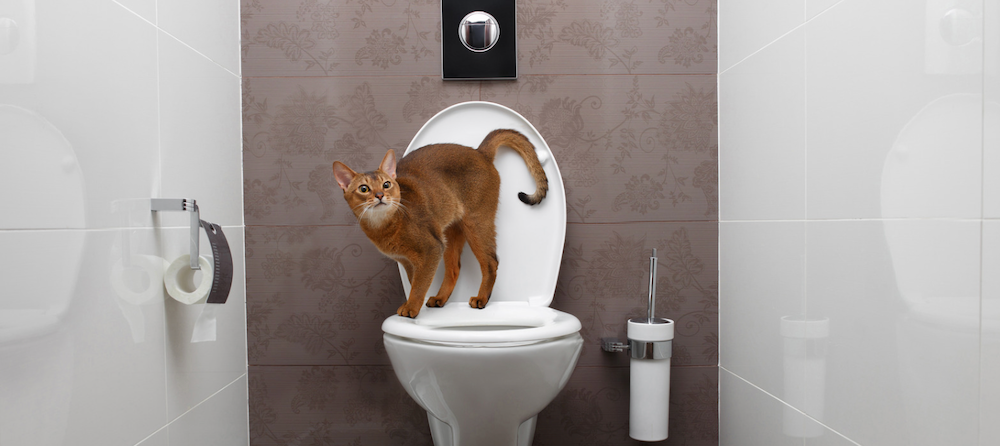The Consequences of Flushing Cat Poop Down Your Toilet - Safeguard Your Pipes
The Consequences of Flushing Cat Poop Down Your Toilet - Safeguard Your Pipes
Blog Article
We have stumbled on this great article pertaining to How to Dispose of Cat Poop and Litter Without Plastic Bags below on the internet and reckoned it made sense to talk about it with you over here.

Intro
As cat proprietors, it's necessary to be mindful of how we dispose of our feline buddies' waste. While it might seem hassle-free to purge feline poop down the commode, this practice can have destructive consequences for both the setting and human health and wellness.
Alternatives to Flushing
Fortunately, there are more secure and more accountable means to take care of cat poop. Take into consideration the following choices:
1. Scoop and Dispose in Trash
The most typical approach of dealing with cat poop is to scoop it right into a naturally degradable bag and toss it in the garbage. Be sure to utilize a dedicated litter scoop and get rid of the waste promptly.
2. Usage Biodegradable Litter
Choose eco-friendly pet cat litter made from products such as corn or wheat. These trashes are environmentally friendly and can be safely thrown away in the garbage.
3. Hide in the Yard
If you have a lawn, think about hiding cat waste in a marked location away from vegetable gardens and water sources. Be sure to dig deep adequate to avoid contamination of groundwater.
4. Set Up a Pet Waste Disposal System
Purchase an animal waste disposal system particularly developed for feline waste. These systems make use of enzymes to break down the waste, decreasing smell and environmental impact.
Health Risks
In addition to ecological problems, purging feline waste can additionally pose health and wellness threats to humans. Feline feces may consist of Toxoplasma gondii, a bloodsucker that can create toxoplasmosis-- a possibly extreme illness, specifically for expectant women and individuals with weakened immune systems.
Environmental Impact
Purging cat poop introduces damaging microorganisms and bloodsuckers right into the supply of water, presenting a substantial danger to marine environments. These contaminants can adversely affect marine life and concession water high quality.
Final thought
Responsible animal possession extends beyond giving food and shelter-- it also entails appropriate waste monitoring. By avoiding purging feline poop down the toilet and going with different disposal methods, we can decrease our ecological footprint and shield human wellness.
Why You Should NEVER Flush Cat Poop (and/or Litter) Down Your Toilet
The Problem with Litter
The main function of litter is to solidify and adhere to your cat’s waste. While this makes litter excellent for collecting cat poop and urine, it’s also the exact property that makes it a nightmare when flushed down the toilet.
Cat litter can and will clog pipes. There is non-clumping litter, but it’s still quite heavy and can build up in pipes. This is true even of supposed “flushable litter.”
The problems only compound when the litter is already clumped into cat waste. Toilet paper is among the more flushable things, and even too much of that will clog a toilet.
The Problem with Cat Poop
Sewers and septic systems are designed with human waste in mind. The microbes that help break down human waste don’t work on cat waste. Additionally, cat poop plays host to the parasite Toxoplasma gondii.
When flushed, this parasite can enter the environment in places it was never meant to, posing a risk to pregnant women, their unborn children, and other people with compromised immune systems. While it might not seem possible, flushing cat poop can indeed introduce this parasite to the public water supply.
These reasons are why, even if you’ve trained your cat to go on the toilet and flush, which is possible, it’s still not a good idea. Also, pregnant women and the immunocompromised shouldn’t change litter, either.
How to Handle Litter
The best way to handle litter is to simply put it in a plastic bag and place it in the trash. Avoiding environmental risks and possible plumbing damage is worth the extra effort.
You can also invest in devices that seal away your cat’s waste in a separate compartment, so you don’t have to change the litter nearly as often. They’re also safer for pet owners because they limit the possibility of Toxoplasma gondii exposure.
Disposing of litter the old-fashioned way will ensure you won’t have to worry about any issues that flushing the waste can potentially cause.
Take Care of Clogged Pipes with Stephens Plumbing, Heating & Air Conditioning
The reasons you should never flush cat poop down your toilet are numerous, but sometimes the inevitable happens despite your best efforts.
Stephens Plumbing, Heating & Air Conditioning is ready to help if you’re experiencing litter-blocked plumbing. Whether you need us in an emergency or want to schedule regular maintenance, we’re here for you.
https://www.stephensplumbing.net/bathroom-plumbing/never-flush-cat-poop-down-your-toilet/

Hopefully you enjoyed reading our part on How to Dispose of Cat Poop and Litter Without Plastic Bags. Thank you so much for spending some time to read our content. Do you know about someone else who is looking into the niche? Take a moment to share it. I value reading our article about Can You Flush Cat Poo or Litter Down the Toilet?.
Estimate Report this page